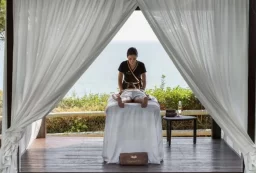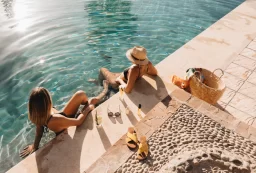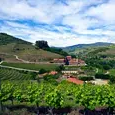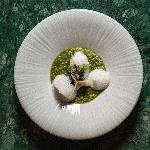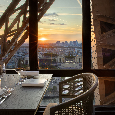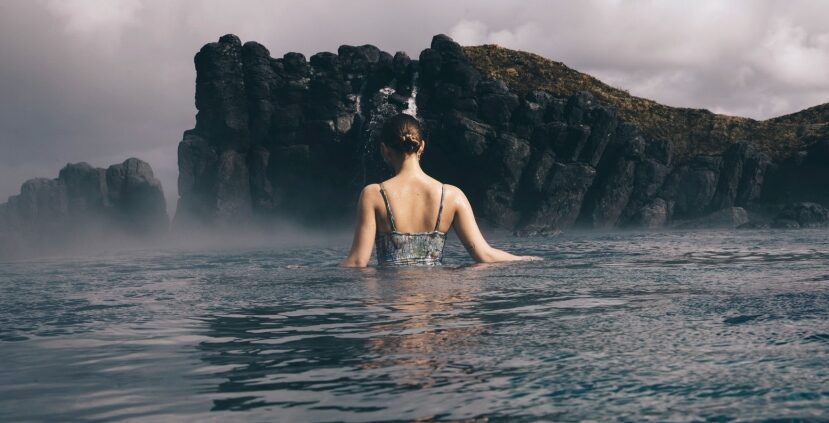
The use of geothermal baths for therapeutic purposes is clearly nothing new. There is evidence from tens of thousands of years ago during the Neolith Age when nomadic tribes used thermal pools as relief from the frigid winters. The Greeks and Romans used volcanic baths for health reasons and especially after battle to promote the healing of their wounds. Later the Turks would clean and purify their bodies in hammams while the Japanese soaked in Onsen, their healing and spiritual thermal baths. Today, spas around the world promote rejuvenation in saunas and hot springs. In Iceland, this hot-water ritual has been passed down from generation to generation and across centuries. Around this Nordic country, you will find incredible thermal waters that range from ultra-chic, man-made spas to others, barely touched by humans, and surrounded by Iceland’s stunning natural landscapes.

Beneath the tumbling waterfalls, black sand beaches and rugged mountains of Iceland lies some of the world’s most geologically active terrain. The Nordic country bridges the Mid-Atlantic Ridge – the meeting point between North American and Eurasian tectonic plates – which not only formed the island as we know it today but is responsible for its volcanic activity. Iceland is home to more than 200 volcanoes and as a result is peppered with hot springs, many of which have been made into geothermal pools with more comfortable temperatures.

These warm and natural baths are integral to the Icelandic way of life and have numerous health benefits; there is more to these spots than their astounding beauty. High levels of silica and other minerals in the water have been found to offer dermatological benefits to swimmers. Soaking in hot springs can help soften dry skin and ease conditions such as psoriasis and eczema, while the healing waters are also believed to provide anti-inflammatory benefits, increase circulation, clear congestion and offer relief from aches and pains. Perhaps the most alluring factor of all: hot springs are the ultimate way to relax and unwind. Here are five of Iceland’s best thermal springs and spas for a very special travel itinerary.
THE BLUE LAGOON

This is Iceland’s most famous geothermal spa and one of National Geographic’s 25 Wonders of the World. Located on the Reykjanes Peninsula, the Blue Lagoon offers astonishing vistas of the surrounding landscape. Here, gently steaming blue waters, enriched with silica, algae and minerals are surrounded by the Svartsengi lava field where moss-covered rocks creep up to the banks of the lagoon. Visitors can enjoy soothing skin treatments and even refreshing drinks without leaving the comfort of the water thanks to the facial stations and swim-up bar. Equally, in-water massages are a unique way to relax and benefit from the nutrient-rich pool.
To extend a visit to The Blue Lagoon beyond one fleeting day, the nature-inspired grounds also contain a luxury retreat hotel where guests can marvel at the otherworldly surroundings from a private balcony. Several gourmet restaurants and spa facilities complete the tranquil experience.
"Nowadays, enchanting infinity pools seem to suspend swimmers at the edge of the treeline, above which lie the elegant crests and troughs of the Icelandic highlands."
THE FOREST LAGOON
Located in the Vaðlaskógur forest, The Forest Lagoon is a new geothermal spa with everything one would expect from a luxury wellness facility and, as its name suggests, guests are never far from nature. The mineral-rich water is sourced from the nearby mountain Vaðlaheiði and was discovered – albeit accidentally – during an unrelated building project. Nowadays, enchanting infinity pools seem to suspend swimmers at the edge of the treeline, above which lie the elegant crests and troughs of the Icelandic highlands.
The wooden pavilion blends seamlessly into the forest and cool-toned rocks, unifying the building with its delicate natural surroundings; this spa takes the term ‘forest bathing’ to a new level. The interior of The Forest Lagoon is equally charming. Reminiscent of a luxury log cabin, warm wooden panelling complements grey stone flooring, acting almost as a neutral frame for the stunning views. Two swim-up bars, a cold tub, a sauna and a restaurant ensure a holistic wellness experience.
REYKJADALUR HOT SPRINGS

A pleasant walk through southern Iceland’s Reykjadalur Valley, past a host of waterfalls and mud pools, will lead you to Reykjadalur Hot Springs. Reykjadalur means ‘steam valley’, a fact that becomes apparent as hikers edge ever closer to the springs. A gravel path – shared by both horses and hikers – meanders past canyons and over stark green hills where steam rises from small pockets in the earth. Many of the pools leading up to Reykjadalur Hot Springs are much too hot to swim in; the real treasure comes further along the trail.
Reykjadalur Hot Springs is a thermal river and the convergence of two streams from further up the valley: one hot and one cold. The cascading waters mix gradually down the creek and visitors can choose a spot to their liking. Wooden pathways have been installed on the banks to protect the delicate grasses but these also make hunting up and down the river for the perfect spot much more manageable. Swimmers can soak and simply let the soothing waters roll over them, admiring the wildflowers as well as the resident sheep as they amble past.
"The warm external pool extends into the North Atlantic Ocean where the water is often met by a dramatic sunset or – if you’re lucky – the dancing of the Northern Lights."
HÚSAFELL CANYON BATHS
Hikers can explore the landscape of Iceland’s highland region during a trip to the Húsafell Canyon Baths. English-speaking tours – also available privately – are run year round and will guide guests along a relatively unspoilt and remote trailhead. Expect rumbling waterfalls, cool glacial meltwater and the satisfaction of a tranquil soak in the Húsafell Canyon Baths at the end. The pools were constructed by locals with the environment in mind, using stone from the local canyon and the nutrient-rich water of a nearby hot spring. The on-site bath house features salvaged timber, and clothing hooks in the changing rooms breathe new life into reclaimed horseshoes.
Guests can choose from two geothermal baths for their 30-minute soak, both with different temperatures ranging from 30-41°C (86-105°F). Whether by snowfall or sunshine, a well-deserved relax in the healing waters of Húsafell Canyon is good for the soul. The magnificent backdrop of mountains and glaciers makes the trip all the more worthwhile.
SKY LAGOON
Minutes from Reykjavík, Sky Lagoon offers a traditional geothermal experience inspired by nature and culture. The warm external pool extends into the North Atlantic Ocean where the water is often met by a dramatic sunset or – if you’re lucky – the dancing of the Northern Lights.
What distinguishes this spa experience from the rest is the seven-step Ritual, a unique and immersive experience inspired by Icelandic tradition. Guests are encouraged to start with a swim in the healing lagoon followed by a cold plunge or a simple stroll in the fresh ocean air. Next is a soothing sauna with unobstructed ocean views where heat cleanses the skin and removes toxins, before a walk through the cold fog-mist space. Extending the natural high, Sky Body Scrub exfoliates the skin before a trip to the steam room where the benefits of the treatment are maximised. The final step of this rejuvenating process is a shower and a return to the geothermal lagoon where guests can swim and have a drink at the Lagoon Bar.

With bathing culture at the forefront of Icelandic tradition, a dip in a geothermal pool not only offers a better experience of the culture of the Nordic country but provides numerous health benefits at the same time. Visitors can look forward to relaxing in the healing waters of age-old hot springs and exploring the inspiring landscape from which they bubble up.






